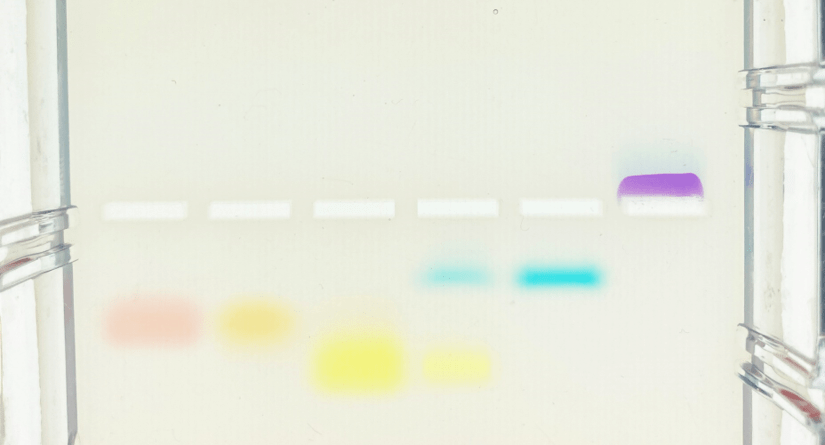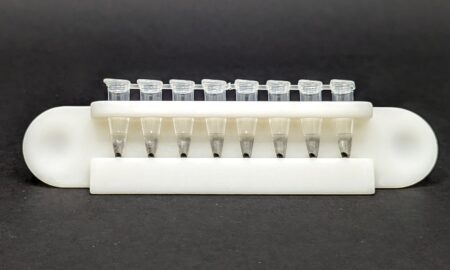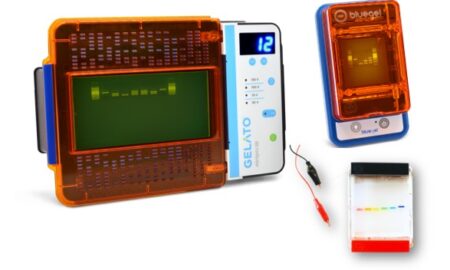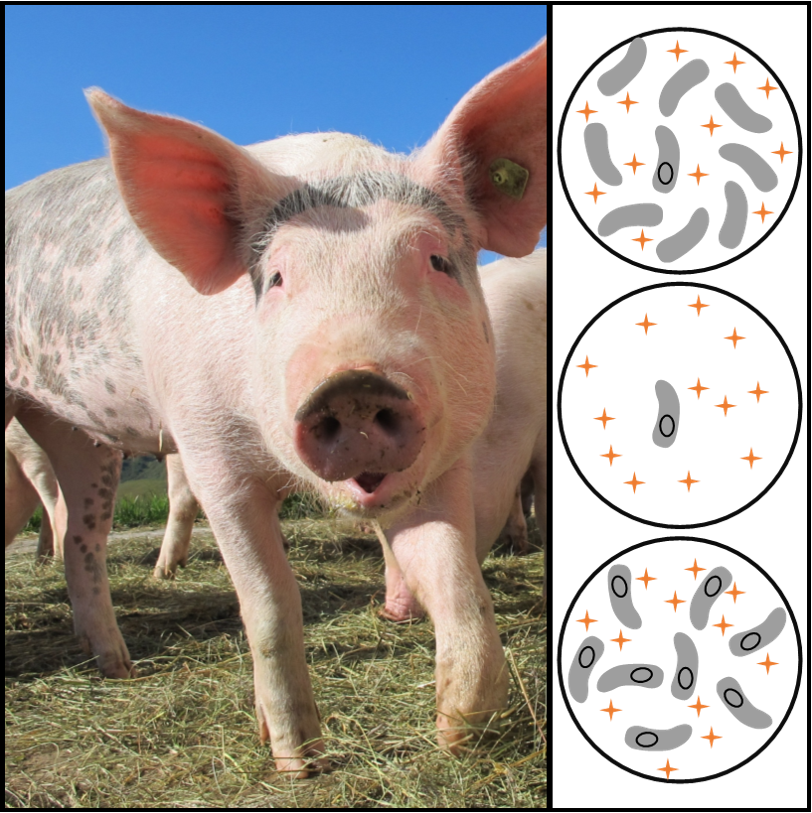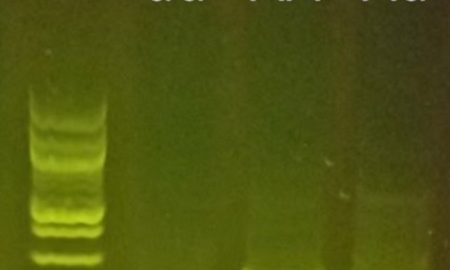Announcing our new dye electrophoresis labs
Bring Mendelian genetics and affordable gel electrophoresis to your classroom!
With the launch of the Bandit™ STEM Electrophoresis Kit, miniPCR bio™ has renewed our commitment to making high quality, accessible biotechnology equipment that is affordable for any classroom budget. Bandit brings a build-it-to-understand-it approach that allows students to get hands-on with the fundamentals of gel electrophoresis.
But with Bandit we are also renewing our commitment to accessible curriculum, and over the next several months we will be releasing new labs with that exact goal in mind. Dye electrophoresis Learning Labs from miniPCR bio will be able to be run on any gel electrophoresis system, and by using safe, clearly visible dyes to simulate DNA, the labs require no stain or illumination results. This means results can be viewed in real time as the gel runs with full runs taking as little as 15 minutes. Finally, new dye labs will come pre-aliquoted, saving teachers valuable prep time!
Read on for a sneak peak at three new labs that are currently being developed, all being launched this fall. All three labs include highly visual lab guides with curriculum aimed at the introductory level.
Cat Genetics Lab: How cats got their spots 
Attention animal lovers! Did you know that whether a cat has white spots in their coat is a simple Mendelian trait? In this lab, students analyze a litter of kittens to connect the white spotting trait to the underlying genetic cause.
Scientists have identified two alleles in the KIT gene that is thought to be related to white spotting. The alleles differ in length by some 7,000 base pairs. Can your students figure out which allele leads to white spotting, and which one leads to a uniform coat? Visit the Cat Genetics Lab page to learn more.
Microbe Hunters: Keeping space travelers safe (from bacteria)
Did you know that equipment from miniPCR bio is used by astronauts on the International Space Station (ISS)? One role this equipment plays is to monitor the ISS for microbial growth, helping to identify potential disease-causing bacteria growing in the astronauts’ environment.
Students take on the role of NASA microbiologists, working on a team that uses molecular techniques to identify bacteria growing aboard the ISS. The results of their gel electrophoresis experiment will tell them which surfaces may harbor pathogenic microbes, and inform important safety recommendations they must issue to the crew! Visit the Microbe Hunters page to learn more.
Mendel’s Peas: A genetics classic, with a molecular twist 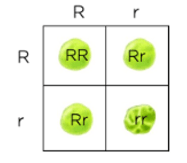
Connect the most classic of classical Mendelian genetics to modern DNA techniques. Mendel’s peas is the system in which inheritance was first described, but only recently have we been able to connect Mendel’s observations to their underlying genetic causes.
Round vs. wrinkled seeds is one of the seven traits used by Mendel to describe the laws of inheritance. Scientists believe that the two different alleles of the SBEI gene is what leads two the round vs wrinkled phenotype. The two alleles differ in length by about 800 base pairs. Can your students establish which allele leads to which trait and describe the dominance relationship between them? Visit the Mendel’s Peas page to learn more.
And don’t forget the Molecular Rainbow Lab! Our original dye lab, offers students an engaging introduction to the theory and practice of a fundamental biotechnology technique: gel electrophoresis.
Gel electrophoresis lab format selection guide: Read the table below if you are wondering whether dye electrophoresis labs, or our more traditional DNA electrophoresis labs, are best for your class.
| Dye electrophoresis Learning Labs | DNA electrophoresis Learning Labs | |
|---|---|---|
| Compatibility |
|
|
| Samples |
|
|
| Visualization |
|
|
| Curriculum |
|
|
